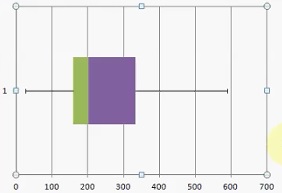

If the whisker to the right of the box is longer than the one to the left, there is more extreme values towards the positive end and so the distribution is positively skewed. Instead, plot them individually, labelling them as outliers. On a box and whisker diagram, outliers should be excluded from the whisker portion of the diagram. In other words, it is much higher or much lower than all of the other values. Before getting started with your own dataset, you can check out an example. This type of plot is also known as a box-and-whisker plot or box-and-whisker diagram. Depending on the audience, it might require more.

I don’t know how well it would work with more data, but for something small like this, I think it can work. When collecting data, often a result is collected which seems "wrong". Box plots may have lines extending vertically from the boxes, or whiskers, indicating variability outside the upper and lower quartiles. This graph approachwhich combines the box-and-whisker with a plot of the actual datahas some nice appeal in that you get both the entire distribution and summary percentile points.

The "whiskers" are straight line extending from the ends of the box to the maximum and minimum values. The median can also be indicated by dividing the box into two. The diagram is made up of a "box", which lies between the upper and lower quartiles. The box and whisker chart is one of the useful graphical representation of statistical data that that shows the median, quartiles, and extreme values at one plot. Make sure you are happy with the following topics before continuing. Let’s consider the built-in ToothGrowth data set as an. To get started, you need a set of data to work with. A box plot is a good way to get an overall picture of the data set in a compact manner. The box plot tells you some important pieces of information: The lowest value, highest value, median and quartiles. The box-whisker plot (or a boxplot) is a quick and easy way to visualize complex data where you have multiple samples. The diagram shows the quartiles of the data, using these as an indication of the spread. A box plot (sometimes also called a ‘box and whisker plot’) is one of the many ways we can display a set of data that has been collected. You can see the standard grouping of speed by each position in the box and the dispersion of widening scores in the whiskers. The visualization is a representation of the 40-yard dash times from the 2014 NFL Scouting Combine broken out by position. Given some data, we can draw a box and whisker diagram (or box plot) to show the spread of the data. The plot above (Figure 2) is a great way to illustrate the effectiveness of the box-and-whisker plot.


 0 kommentar(er)
0 kommentar(er)
